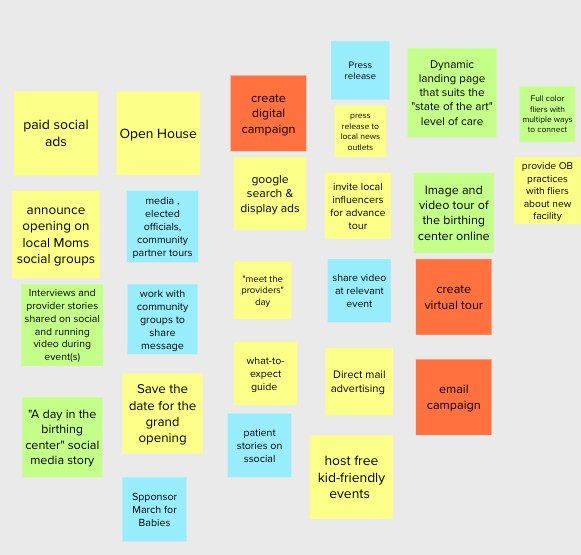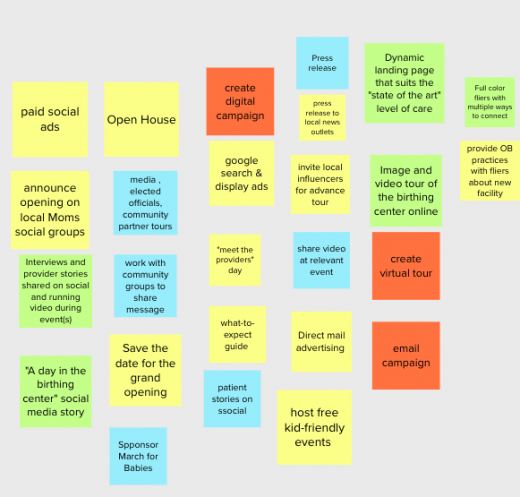Getting started with the Agile Marketing Navigator: How to hold a successful Brainstorm session
An agile framework designed specifically for marketers includes a Brainstorm session for stakeholders and the team.
We recently introduced you to Agile Marketing Navigator, a flexible framework for navigating agile marketing for marketers, by marketers in the article “A new way to navigate agile marketing.” The navigator has four major components: Collaborative Planning Workshop, Launch Cycle, Key Practices and Roles. Within these categories, there are several sub-pieces for implementation. Over the next several weeks, we’ll dive into each piece and give you practical, actionable ways to use them at your company.
The Collaborative Planning Workshop is the first stop in your agile marketing journey. Within that, there are four distinct pieces: Guidepoint, Brainstorm, Minimally Viable Launch and Blueprint. Last week we took you through how to align on the Guidepoint. Now, let’s dive into the Brainstorm and I’ll give you some tips from how I’ve facilitated this with several clients that maximizes creativity and contributions from everyone.
A place where ideation can happen
The business stakeholders and all team members should participate in the Brainstorm. Even though the stakeholders aren’t the ones doing the work and may not be as in tuned with how it all comes together, leveling the playing field and working as equals often leads to better empathy between everyone, and quite frankly — better ideas from different perspectives.
To get started, make sure that you have a place where ideation can happen. For virtual teams, a sticky note tool like Mural is great for everyone to be able to easily submit ideas. If you’re in a co-located office, find a conference room with plenty of sticky notes and wall space.
Next, make sure there’s a facilitator who can provide clear expectations, watch the time and ensure that everyone is participating. Typically, this is done by the Agile Champion on the team. This role may also participate in the brainstorm.
While there’s no ‘right’ way to hold a brainstorm, I’ve found that providing everyone with what’s expected of them makes it go smoother. Here are some things I’ve tried:
- Everyone should submit at least five ideas.
- Your ideas should be something executable to the marketplace (avoid things like “research” or “plan” as those are internal tasks).
- Try to be as specific as possible. Rather than say, “Social post” say something like “Patient stories on social media” (in a healthcare context — see below).
- The timebox is…. (15 minutes is typically enough time).
- Ask the group if they’d like silence for brainstorming, or music in the background. I’ve had some teams where someone offers to be the DJ!
Brainstorming a healthcare Guidepoint
Here’s an example from a team of marketers from a healthcare system. Their Guidepoint was:
“Market the opening of a new state-of-the-art birthing center by reaching 2,500 expecting parents living within a 10 mile radius. Once the birthing center opens, 25 percent of them come to our hospital.”
Here are some of the ideas that they generated through the brainstorm activity:

The brainstorm is a really important part of agile marketing. It helps ensure creative thinking can happen that’s truly aligned with the business outcomes that the team is trying to achieve. This activity replaces work requests that come through to the team without any conversation. The brainstorm is an empowering event for marketers — plus it’s a lot of fun!
The post Getting started with the Agile Marketing Navigator: How to hold a successful Brainstorm session appeared first on MarTech.
(38)


